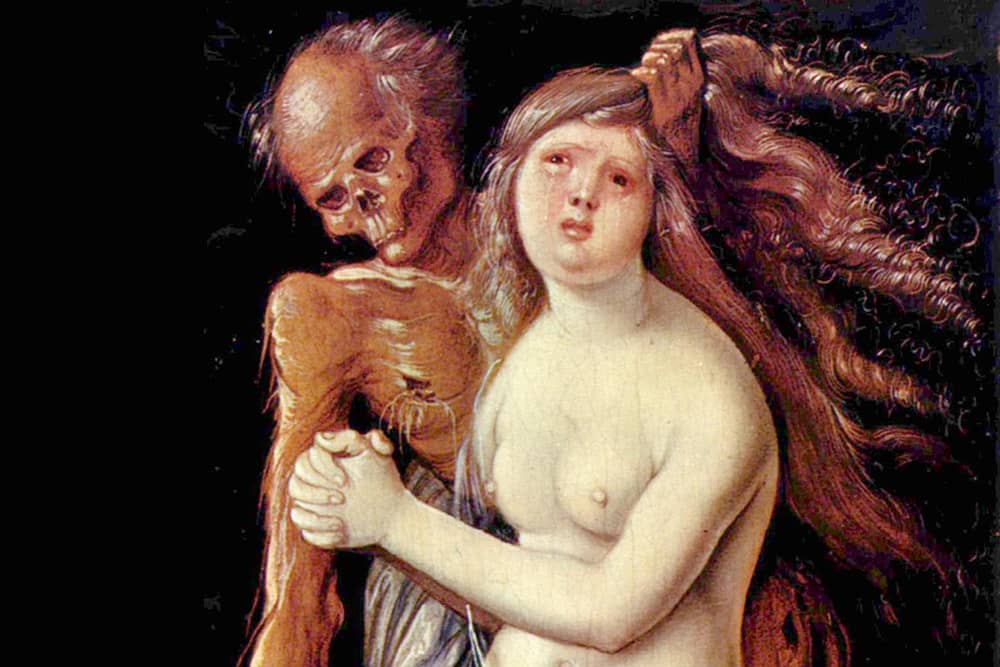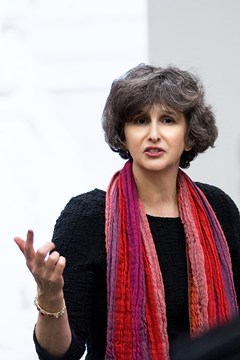Death and Art

DEATH AND ART: A HUMAN HISTORY/HNRC 4013H-001 (11301)
T/Th, 2:00-3:15 p.m., Spring 2023
GEAR 129
View Professor Jacobs's public preview lecture for the course on YouTube (1 hour).
Listen to Professor Jacobs talk about the course in a segment from KUAF's Ozarks at Large (18 minutes).
Interested?
Current students can apply online. Application deadline: 11:59 p.m., Monday, October
31.
Questions?
Contact
John Treat
.
Apply for Honors College Courses
Although today art is associated with museums and galleries, in premodern Europe art was closely tied to one’s fate after death. At that time—when people had an average lifespan between 30 and 40 years and about half of all children died before the age of sixteen—death was a very visible part of life. Medieval Christians were terrified about what future awaited them they died. But art could help secure the proper spiritual future for their souls. Commissioning art constituted a “good work,” which could help achieve salvation after death. Prayers before indulgenced images offered reduced time in Purgatory, the place where souls who had committed minor sins were punished (for thousands of years or so) before being admitted to heaven. In addition, images, epitaphs, and tombs served as reminders to the living to pray for the deceased and thereby shorten their time in Purgatory.
This class will focus on the art of Northern Europe in the fifteenth and sixteenth centuries, a time when the fascination with death and the macabre was particularly evident in art. We will examine different sites and artistic genres that functioned in relation to death, such as chapels, monasteries, altarpieces, tombs, epitaphs, and books, before examining artists who focus on themes of death, such as Baldung, Holbein, Bosch, and Bruegel. Students will give presentations on selected themes, such as Death and the Maiden, the Dance of Death, skulls, skeletons, suicide, war, capital punishment, the Fall, and the Death of Christ.
Course Credit:
- All-students: 3 hours of honors credit
-
Fulbright College:
- Fulbright Honors humanities colloquium
- Three hours of upper-level honors credit in Art History.
- Three hours of upper-level honors credit in Medical Humanities.
- Three hours of upper-level honors credit in Medieval and Renaissance Studies.
- Three hours of upper-level honors credit in Religious Studies.
- Walton College: honors colloquium credit
About Lynn Jacobs:

Professor Jacobs is a Distinguished Professor in the School of Art. She is a specialist in late medieval and early modern art in Northern Europe and the author of four scholarly books: Early Netherlandish Carved Altarpieces, 1380-1550: Medieval Tastes and Mass Marketing (Cambridge: Cambridge University Press, 1998); Opening Doors: The Early Netherlandish Triptych Reinterpreted (University Park: Pennsylvania State Press, 2012); Thresholds and Boundaries: Liminality in Netherlandish Art (1385-1530) (London: Routledge, 2018) and The Painted Triptychs of Fifteenth-Century Germany: Case Studies of Blurred Boundaries (Amsterdam: Amsterdam University Press, 2022). In addition, she has published numerous scholarly articles in major journals, such as Art Bulletin, The Sixteenth Century Journal, and Zeitschrift für Kunstgeschichte. She was awarded two research fellowship from the National Endowment for the Humanities as well as a research stay grant from the DAAD (Deutscher Akademischer Austauschdienst). She is a recipient of the Charles and Nadine Baum Faculty Teaching Award, the top teaching award at the University of Arkansas, as well as the University of Arkansas’s Teaching Academy Award of Excellence.